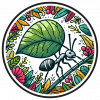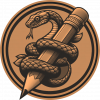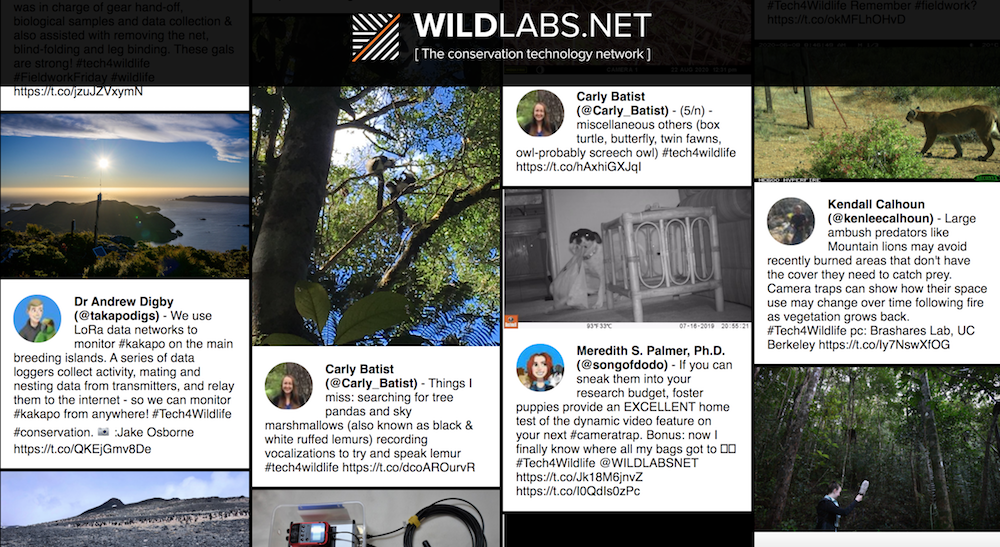
As our annual celebration of conservation technology and all the ways our growing global community uses it in their work, the #Tech4Wildlife Photo Challenge showcases your innovations and successes in the field, the lab, and everywhere in between!
My team uses a multi-#drone system to study Adelie penguins in #Antarctica! This #tech4wildlife allows us to survey hundreds of thousands of penguins in just a few hours to understand how the population is changing. @WILDLABSNET @PointBlueConSci pic.twitter.com/0sHlJR5Eja
— Parker Levinson (@PrkrLovesParks) February 25, 2021
Images from our #Tech4Wildlife Photo Challenge have reached more than 1.5 million people, establishing our #Tech4Wildlife hashtag as the go-to place for conservation tech on Twitter and raising awareness for all the vital conservation work happening within our community on every continent around the globe.
We all know that 2020 was an unusual year. Many conservation field projects were altered or postponed, those working in technology development faced the challenges of moving online, and all of us turned to the internet to stay connected. Just as none of us knew what to expect from 2020, we didn’t know what to expect from the 2021 #Tech4Wildlife Photo Challenge; what we saw this year from over 250 entries was not a representation of a difficult year, but a true celebration of conservation technology, the dedicated people who make it possible, and optimism for the future of our field.
For conservationists who were unable to travel to the field in 2020, like lemur researcher Carly Batist, this year's challenge provided an opportunity to reminisce on past fieldwork. Carly provided valuable insight into the full process of #tech4wildlife fieldwork, emphasizing how the work carries on once the fieldwork wraps and it comes time to analyze the collected data.
How do I use #tech4wildlife? I use acoustic equipment (literally stuff the movie people use) but in a bioacoustic way - studying ruffed #lemur vocalizations in #Madagascar w/ help from @CentreValBio & @HunterPMELLab pic.twitter.com/39bzCuxeRS
— Carly Batist (@Carly_Batist) February 24, 2021
The models use acoustic features from the calls (like those outlined below) for training. Ruffed lemur roar-shriek chorus spectrogram below - these are what we're searching for amidst the other rainforest noise! #tech4wildlife pic.twitter.com/lSJ3s0aGUo
— Carly Batist (@Carly_Batist) February 24, 2021
While community members like Carly faced changes to their 2020 #tech4wildlife work, many crucial conservation projects on the ground were able to carry on, demonstrating exactly why building local capacity, empowering local communities with conservation technology resources and training, and de-emphasizing the old view of "field seasons" is so important to current and future conservation work. Dr. Meredith Palmer of the WILDLABS-born collaboration BoomBox used this year's challenge to share how and why she supports local capacity building and training the next generation of conservation leaders.
.@GorongosaPark, where our @WildCamGNP long-term camera trap project is situated, provides conservation students from local universities with authentic, hands-on field experiences. It's been a privilege teaching all facets of field tech, from coding to camera trapping (3/ pic.twitter.com/uBpUBSGpL1
— Meredith S. Palmer, Ph.D. (@songofdodo) February 25, 2021
... and our 2019 Snapshot Serengeti #hackathon with @DeepIndaba and @KenyattaUni had inspiring teams of students working day and night to develop new AI to help wildlife conservation! Being able to contribute to these students' futures is hands-down the best part of my job (5/ pic.twitter.com/IhglnlIUGZ
— Meredith S. Palmer, Ph.D. (@songofdodo) February 25, 2021
We were also thrilled to celebrate the ongoing successes of those community members who continued working, innovating, and collecting data in the past year. Sawfish Project Indonesia showed us how they carried on with their eDNA research detecting sawfish from water samples in home lab setups...
Working from home as a molecular scientist is something that can be done nowadays @WILDLABSNET #Tech4Wildlife pic.twitter.com/m26n8QZX8N
— Sawfish Project Indonesia (@sawfishid) March 2, 2021
While Alison Forde shared the thrill of experiencing a #tech4wildlife biologging deployment for the first time, live from the field...
It finally happened! I got to join the Caribou collaring crew this afternoon. It was amazing and probably my favourite day of work ever! This gal was about 7 years old and had a calf nearby. #tech4wildlife #wildlife #speciesatrisk #caribou #wildlifephotography pic.twitter.com/2brFMB8BPt
— Alison Forde (@natural_hero) March 1, 2021
The conservation dog community shared how they were able to meet social distancing requirements and carry on with the important task of conducting noninvasive surveys for local endangered species...
Some work was cancelled where we needed to fly to get to remote field destinations. But bc our Detection Teams work solo, much of our fieldwork was deemed necessary (endangered ssp) & safe (innate social distancing). We had a full year of nonivasive surveys! #conservationdogs pic.twitter.com/ugZ9jOfaiF
— Rogue Detection Teams (@roguedetection) February 25, 2021
And Ollie Wearn updated us on the future of his Audiomoth-powered bioacoustics study of critically endangered gibbons, with machine learning being explored as his next step in analyzing and sharing the massive quantities of collected data.
We’re currently setting @AudioMoth devices in the home-ranges of several groups. These are tiny, low-cost, bare-bones acoustic recorders, and can be deployed in large numbers relatively quickly.
— Ollie Wearn (@olliewearn) March 3, 2021
Did I mention that the #caovit gibbon lives in extreme limestone karst terrain? 7/n pic.twitter.com/MkbdB8Yr1h
As seen in both Carly and Ollie's threads documenting the process and scope of their #Tech4Wildlife work, one of the greatest parts of following the #Tech4Wildlife hashtag and Photo Challenge is seeing not only the personal highlights, but comprehensive stories of conservation tech projects and the dedicated teams behind them.
The WILDLABS-born collaboration BearID has kept us updated on their project's progress during previous #Tech4Wildlife Photo Challenges, and this year was no exception. They recapped their ongoing efforts to build and improve their individual bear identification algorithm using camera trap data and machine learning, a groundbreaking project that recently earned the a feature in the New York Times!
We conducted some testing of our BearID software in real time using @Docker and the help of some #grizzlybears. We are using a population of bears that have been studied for >20yrs to assess the robustness of our #DeepLearning models. #Tech4Wildlife @WILDLABSNET 3/ pic.twitter.com/d5VgVenlez
— BearID Project (@bearid_project) March 1, 2021
And our 2021 #Tech4Wildlife Photo Challenge winner, top honouree Dr. Andrew Digby, shared an inside look at New Zealand's groundbreaking kakapo conservation program, possibly the most comprehensively #tech4wildlife-based endangered species recovery program ever attempted.
Nearly every #kakapo on the breeding islands has its own smart food hopper, which is programmed to open only for that bird. Coupled with scales, this enables us to remotely manage their weight, so they’re in optimal breeding condition. #Tech4Wildlife #conservationtech #parrots pic.twitter.com/pfdsfaiFPV
— Dr Andrew Digby (@takapodigs) February 27, 2021
Lisa demonstrating how a #kakapo smart hopper should work. The proximity sensor detects her transmitter, and unlocks the lid so she can feed. The scales log her weight. Video is in real time! #Tech4Wildlife #conservation #parrots pic.twitter.com/we7RfuxxAx
— Dr Andrew Digby (@takapodigs) March 1, 2021
With kakapo numbers hovering in the low 200s, every single bird is absolutely crucial to the survival of this New Zealand species. As Andrew's many posts vividly display, conservation technology has played a central role in monitoring, protecting, and breeding the wild kakapo population. Every wild bird is tracked and monitored with biologging gear and customized feeders that correspond to individuals, respond to their transmitter sensors, and record their weight.
Every #kakapo wears a smart transmitter, fitted just before they fledge. This enables us to find them and monitor their activity, nesting and mating behaviour. #Tech4Wildlife #conservation #parrots pic.twitter.com/zL1RGhrdMe
— Dr Andrew Digby (@takapodigs) February 25, 2021
Though it's always difficult to choose a Top Honouree, we can all agree that Andrew's work protecting these special flightless birds is spectacular, and inspirational for all of us in the #tech4wildlife community. The kakapo recovery program is an incredible example of how combining different conservation technologies, like biologging transmitters, drones, sensor-equipped smart eggs, and even customized monitoring tools like their high-tech feeders, can have a massive impact on conservation efforts, and even save an entire species.
We developed a smart egg with partners @MeridianEnergy to put into #kakapo nests. This makes noises to mimic a real egg about to hatch, so the mother is ready to feed the chick when it is introduced from an incubator. #Tech4Wildlife #collaboration #conservation pic.twitter.com/k9iwCUL4Ih
— Dr Andrew Digby (@takapodigs) February 28, 2021
During the last breeding season we used a drone to transport #kakapo sperm from the male to the female during artificial insemination. The first time kākāpō sperm has ever flown! #Tech4Wildlife #conservation #parrots #bigideas pic.twitter.com/h88EqOa7Jr
— Dr Andrew Digby (@takapodigs) March 2, 2021
With another #Tech4Wildlife Photo Challenge in the books, we can say that in spite of worldwide lockdowns, cancelled field seasons, and other disruptions, all of our entries had something important in common: enthusiasm for all the incredible things this community has accomplished in the world of conservation tech! Looking ahead through 2021 and beyond, we can't wait to see where you all lead us next.
You can view our full list of Top Ten honourees and honourable mentions here on Twitter, and check out our #Tech4wildlife photo wall to see all the entries!






Add the first post in this thread.